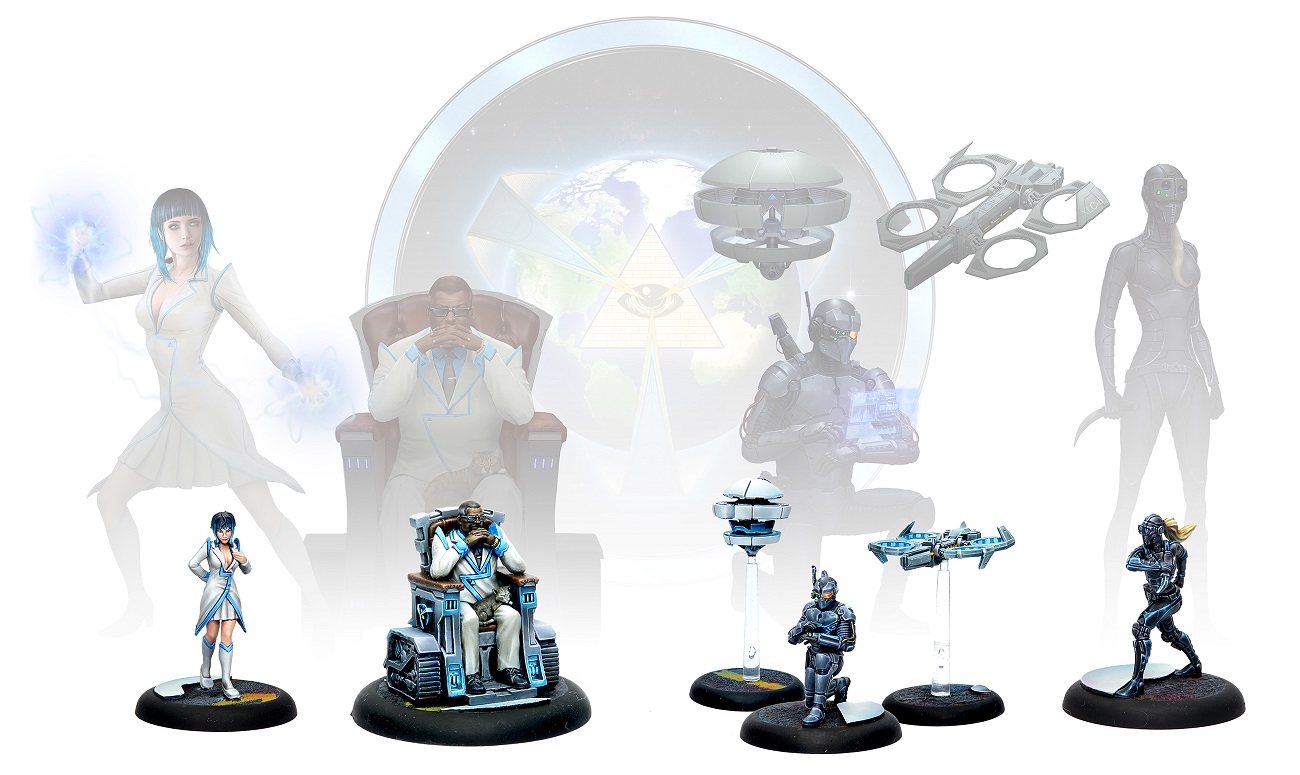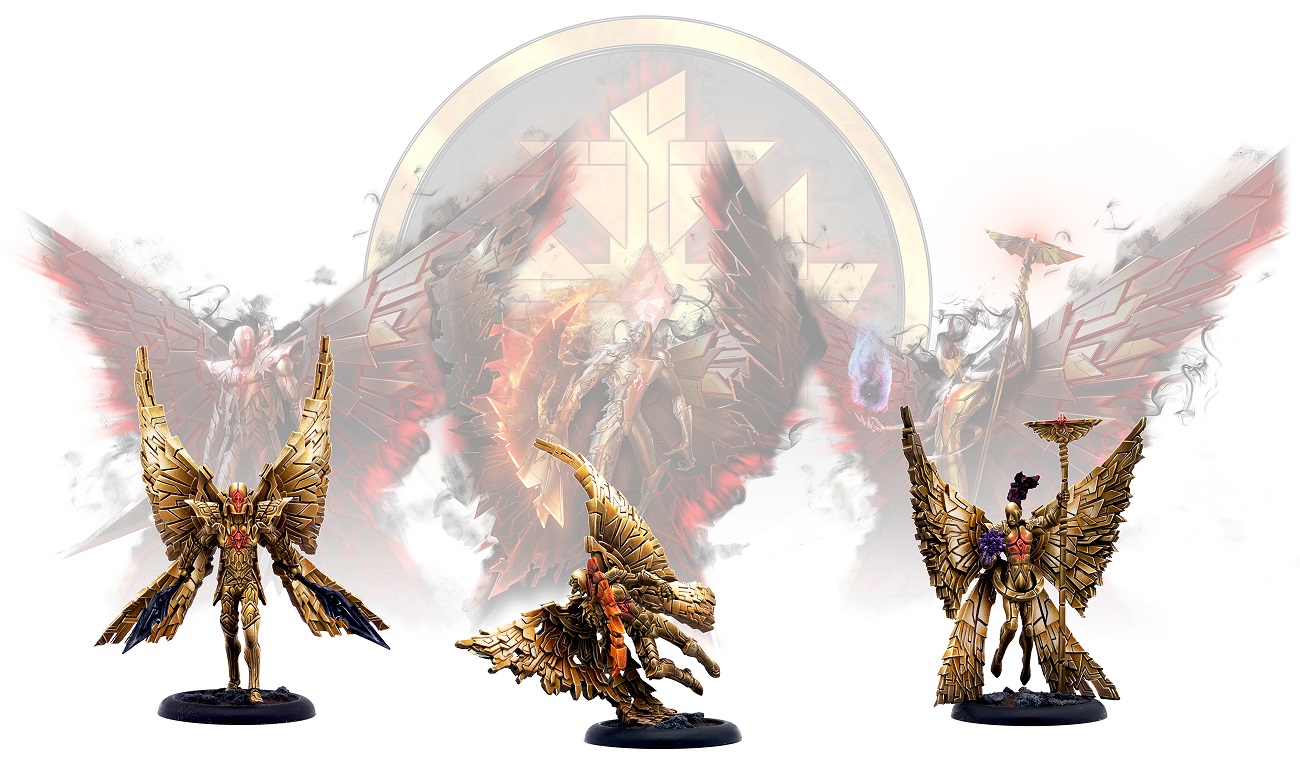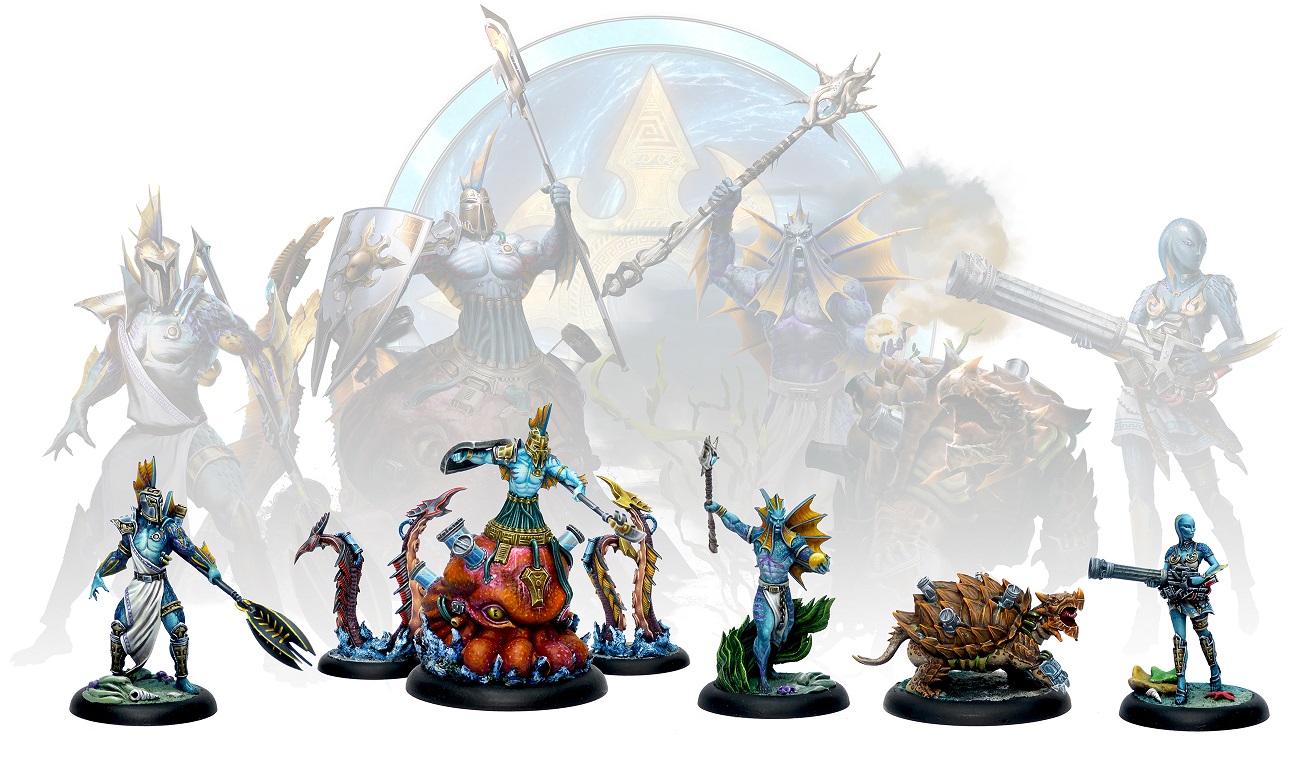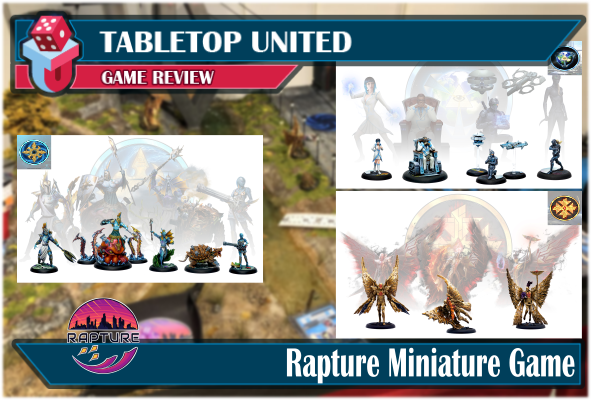Rapture - Tabletop Miniatures Game Review
Designer: Rene Rusin, Gravity Bay
Artist: Various; Christopher Kolb, Mateusz Ozminiski, Hokunin
Publisher: Gravity Bay
Year Published: Kickstarter 2020
No. of Players: 2-4 player
Ages: 13+
Playing Time: 60-120 minutes
Main mechanic / Theme: Apocalyptic, sci-fi, miniature skirmish game using D6s.
Rapture is a unique interesting setting for a new miniature game
and brings a new twist to the familiar!
Find more info on BoardGameGeek.com and Kickstarter.
Overview: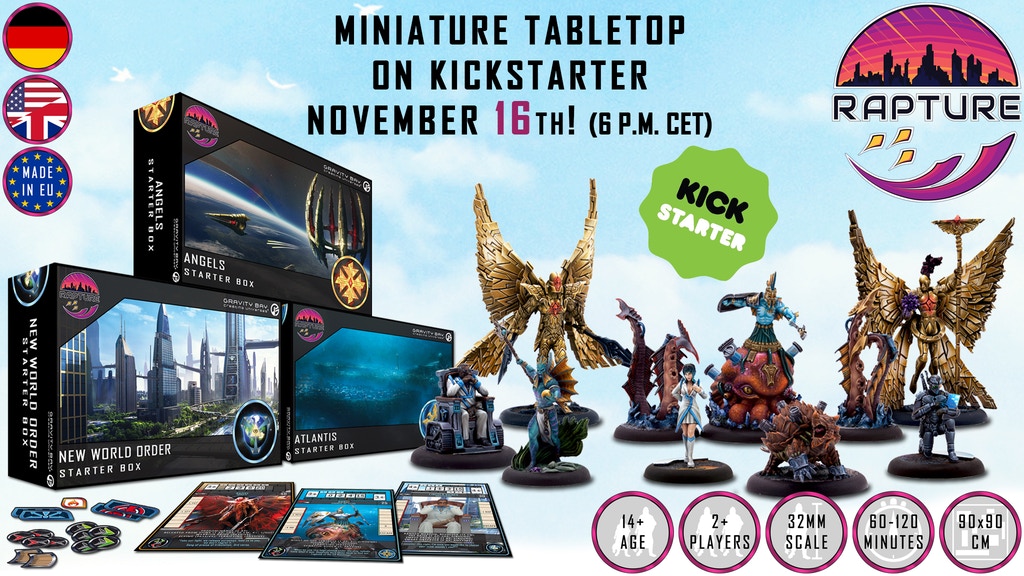
Rapture is a new miniature war game out of Europe with game play, story, and design inspired by the coming of Rapture from Christianity. The twist in the storyline is that the Rapture is not at all what humans thought it would be, but a way for powerful beings, called Gods, to survive a disease that threatens their existence. During Rapture, civilizations on various planets are cultivated and harvested for a specific genome in order to keep the disease that threatens the Gods at bay. Players will find iconic words, names, or phrases from Christian lore throughout adding to the mystique and mystery of the setting.
In the current timeline, 30+ years into our current future, the Upheaval (Rapture) has occurred, and the remaining humans populating the planet are unfit for cultivation and must defend themselves against the invading “angels.”. The automatic process of destroying the remnants of human civilization has begun, and “angels” from on high are tasked with carrying out the process. With the now known Atlantians and human New World Order forces competing against each other and the Angels, fighting across the planet has begun. Humans have recently defeated a single Angel and is learning ways to fight against the invading enemy. With three core groups for players to choose from, they compete against each other playing various missions to earn victory. Victory is earned by completing those missions as well as destroying your opponent’s forces. The winner is the player with the most points in missions completed as well as points from defeating the opponent’s army.
Rapture is a miniature skirmish game, meaning that individuals or small squads or units of miniatures are used instead of trays of infantry models to secure objectives and carry out missions. Players who like smaller model count miniature games or more individualized models will prefer the smaller model count of Rapture over larger sized miniature games.
The models in Rapture as provided by the publisher, Gravity Bay, are resin and came as multi-part models that needed to be glued together before play. Painting the models can also add to the enjoyment and verisimilitude of the gameplay as they come unpainted like most miniature games.
Gameplay and mechanics:
Rapture used model cards with most of the information to play found printed therein. Common and universal rules are found within the free printable rulebook and the unique elements of each model. The common D6 is used for combat rolls and various checks. Players roll X number of dice based upon a specific stat to achieve hits or blocks.

A common framework of play is used by both players to set up the game board as well as take turns and actions. Players have six rounds of play to meet their objectives and defeat their opponent’s army.
Players will choose models from unique factions to build a force of 100 points worth of models. The starter boxes are conveniently set up for players to begin play immediately without having to build or customize their army.
The size of the play area is 3’ x 3’, or 90x90 cm. And players must have enough terrain to make choices during activation interesting. Terrain is always important in miniature games as it provides different effects on movement, firing, cover, and much more. Players will take turns placing terrain onto the battlefield until all pieces originally chosen for the game are placed. Measurements and such are described in centimeters in Rapture.
Next, before play begins, players are asked to choose three mission cards and to choose one at random. Each player will have their own faction specific mission or generic mission and once chosen, are placed face-up so all players can see the goals and objectives. If any specific tokens or requirements for a mission are required, those requirements are now placed onto the battlefield.
Next, players take turns placing single units in the respective deployment zones. This sets up starting locations for each faction and gives players an opportunity to react to the other’s placement of models.
There are three phases of play- Preparation phase, Activation Phase, and Clean Up Phase. The three phases help keep the game moving and players participating on equal footing (although in battle, sometimes things don’t feel so equal!).
The preparation phase consists of determining victory points, maintaining formation with multiple models as needed, refilling action points as well as reaction points, performing escapes, rolling for Ascension, and determining player initiative.
The Activation Phase involves spending action and reaction points to move and attack with models and consists of activating units in alternate order. Players activate 1 unit by spending action points to attack, move, and interact with buildings and objectives on the battlefield. Units may only activate once- however, you may still use reaction points in response to your opponent’s moves and actions. After all models and units have activated, moved, attacked, defended, etc, the game moves to the Clean Up.
One very cool feature in Rapture game play is that you may target a model's health or morale, depending on the options and choices you wish to make. Make the opponent's models route or destroy them completely. The choice is yours.
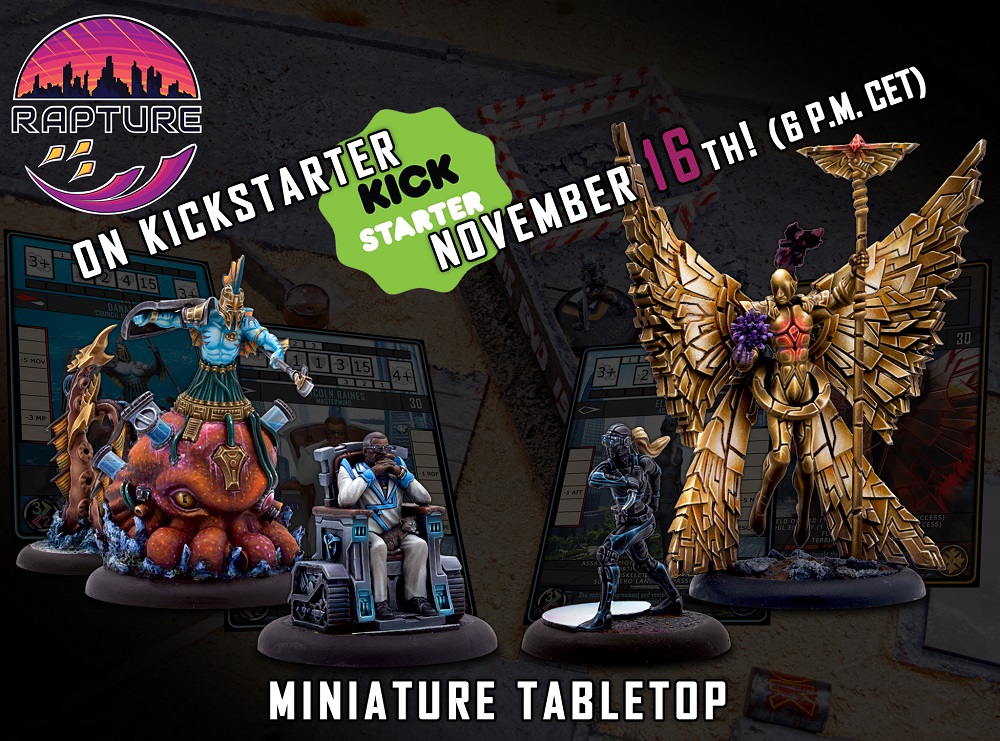
During Cleanup, players count victory points, deal with status effects such as fire, radiation, and despair, and final engagement. With Cleanup, players determine if victory has been had by counting mission points and how many enemy units have been destroyed. Models that have any status effects on them work out the damage or in-game effects at this point as well. Lastly, models within squads that are in close combat that aren’t in base to base are moved so that they are in base to base with the corresponding enemy units.
The three phases repeat until one player is victorious over the other.
Theme, Artwork and Illustration, Graphic Design and Layout
The theme of the game, although apocalyptic itself isn’t unusual, working with a religions theme is daring; especially one as big as Christianity is. Although the game really doesn’t play with religion, it does get inspiration from Christianity by pulling from the story of the Rapture and taking it on a new and unique path. I like that Gravity Bay isn’t afraid to take a well-known story and adapt it to a new and exciting storyline.
The models themselves are unique and the factions within the game are unique with the angelic cyber-angels to the aquatic Atlanteans, the publishers are working with some basic tropes but turning them to fit the theme of the game. They have a wide swath of ground they cover- pulling from mythology and well-known stories and moving those into an alternate and futuristic timeline gives them a lot of room to play around with. If the models stay resin, they will hold a lot of detail. As the Kickstarter launched November 16th, I’m not sure what the quality of mass-production models will look like, but the ones I received were well done, with crisp, tight, details.
This was a pre-production copy so I can't necessary evaluate the current print and play release. Hopefully we'll get a chance to review the final product after a succesfull Kickstarter.


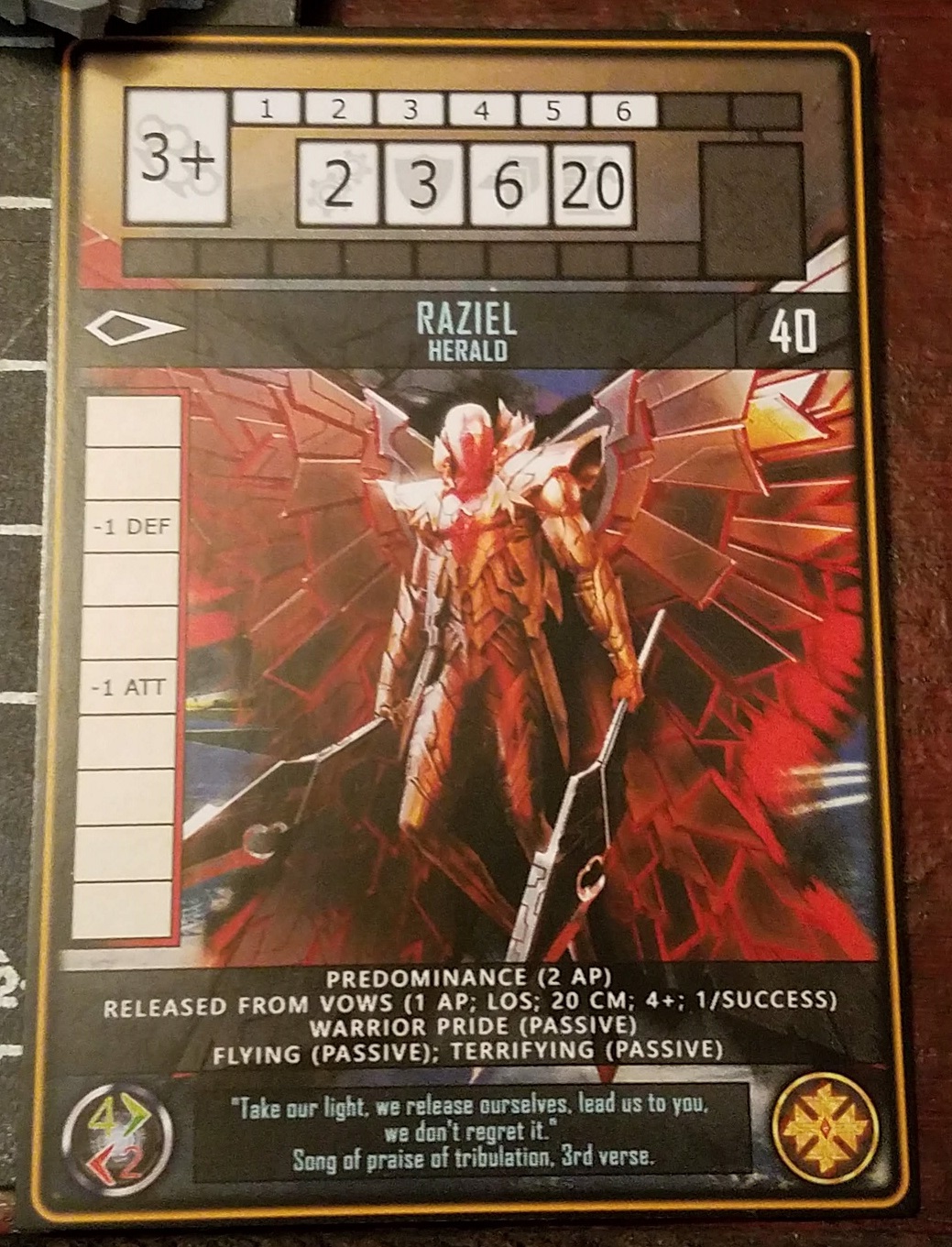
What worked:
The theme and story within the setting of Rapture works well. They’ve taken a known story and made it their own. In addition, for gameplay, using cards with various model stats on them works to the advantage of the game- Having a small model count means you aren’t cluttering up the table with loads of cards and having the cards on the table means you aren’t constantly digging in the rulebook or finding charts. This means players can focus on gameplay and get to completing missions and destroying their opponent’s forces without being distracted.

Final thoughts:
Although it’s hard to separate miniatures games from other miniature games, you have to have a hook to stand out in today’s market. Rapture does so by pulling on those well-known themes and making it their own while having sound and well-done rules. You won’t find any surprising twists or new mechanics in Rapture, but you will find smooth game play within a unique setting, giving players an entertaining game without breaking the reality of the game. The rules play well and for being a new company with a new game, Gravity Bay seems to have done their homework to create a visually compelling game with well-thought rules that brings strategy and dynamic decision making to the players. Take a chance on Rapture!

